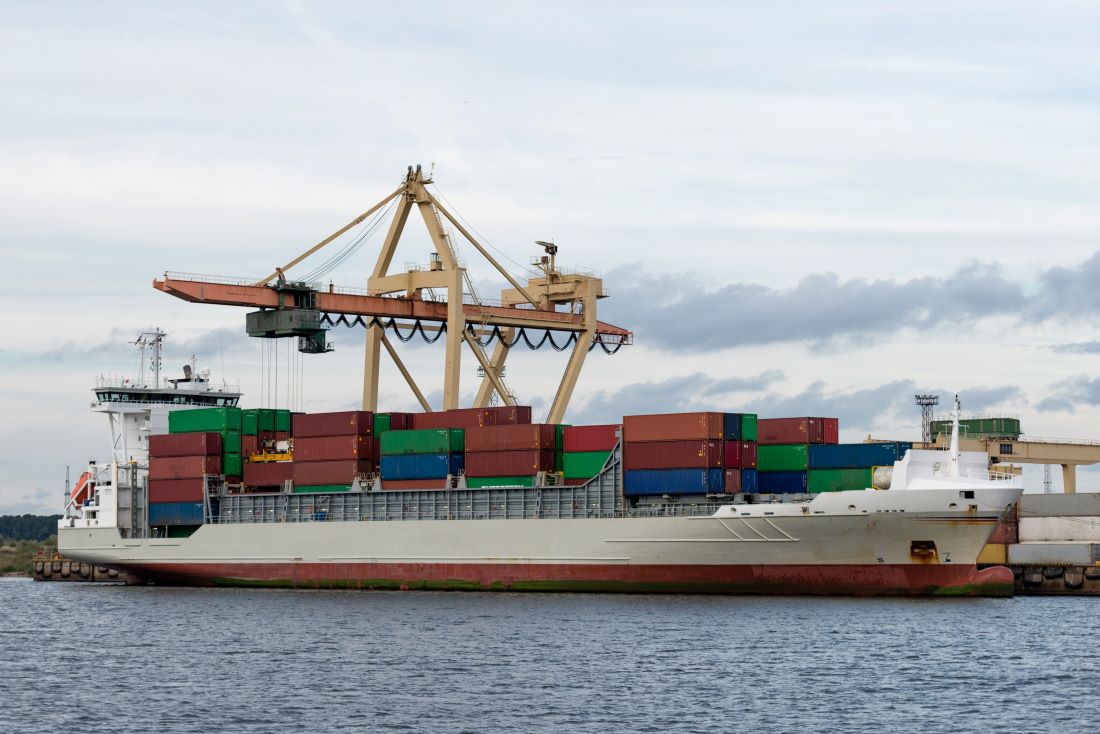
In the emerging landscape of Industry 4.0, the once clear boundaries between Information Technology (IT) and Operational Technology (OT) are blurring. Yet, one thing is still clear: each category of systems is subject to unique cyber threats, both internal and external. Marine terminals interested in protecting their systems and information from vulnerabilities need to be aware of these unique threats and how to prevent them.
Let’s explore the individual risks faced by IT and OT systems and the cybersecurity measures marine terminals will be required to take to ensure secure systems now and into the future.
Understanding IT (Information Technology) and OT (Operational Technology) Systems
There is a subtle but very important distinction between IT and OT that’s vital to understand before we can discuss the unique risks that each category faces.
Understanding IT
IT is the more common category of technology systems and is familiar to anyone who works for companies in the digital age.
IT covers a broad range of computers, networks, software, and other technologies used to store or exchange information.
IT professionals are focused on:
- Managing data
- Facilitating communications, including phone networks, intranets, and email services
- Managing software updates and access
Understanding OT
OT is less common and is usually only encountered inside companies that work in industries like manufacturing, energy, utilities, and logistics. This is because OT systems are focused on managing and automating operational processes.
Marine terminals use OT for things like:
- Equipment control systems
- Sensors and safety systems
- Machine automation
IT vs. OT
IT systems are focused on managing information that supports business processes and decision-making. IT deals with digital data like text and images, utilizes standard networking protocols, and involves frequent software updates and system upgrades to maintain security.
OT systems, on the other hand, are concentrated on controlling and physical marine terminal operations. OT traditionally utilizes specialized industrial networks designed for real-time communication and control and is designed for long lifecycles with less frequent upgrades due to the need for stability.
The Convergence of IT and OT

In the past, OT systems were frequently segmented from IT systems. This occurred for reasons like stability but also because OT systems were perceived as less prone to cyber risks, were less integrated into daily business processes, and were designed for infrequent updates.
All that is changing with the advent of Industry 4.0.
For access to real-time insights into cargo movement, up-to-date vessel and truck information, and proactive communication with clients, OT systems are rapidly becoming more integrated with and dependent upon their IT counterparts.
Unique Cyber Risks in IT Systems
While IT and OT are converging rapidly, each type of system still faces unique cyber risks.
Malware and Ransomware
Malware is malicious software that targets programs and networks. While ransomware is a specific type of malware that can hold programs and information hostage in exchange for payments.
Since it can infect entire networks rapidly and access critical information, defending against malware attacks is a top priority for every IT professional.
Phishing and Social Engineering Threats
If malware is equivalent to a criminal breaking a window and forcing their way in, phishing and social engineering are the same as convincing a shop owner to give them the key to the front door.
A common example of a phishing attempt is an email pretending to be from someone within the company that asks for an employee’s email password or includes a link to a malicious attachment.
Social engineering is even more subtle and can involve attackers spending days or weeks communicating with high-level employees before convincing them to divulge protected information such as login info.
Data Breaches and Privacy Concerns
Being careless with customer information or privileged company information can cause problems without ever directly impacting business operations.
Hackers who gain access to private information can use it to extort the company or simply cause reputational damage by leaking it to the public.
Unique Cyber Risks in OT Systems
Attacks that target OT systems are especially concerning for marine terminals because they can cause physical damage to assets and even threaten the health and safety of employees.
Attacks on Industrial Control Systems (ICS)
Systems that manage critical infrastructure can be prime targets for OT cyber-attacks.
These systems are vulnerable to malware attacks such as ransomware threats. Their integration with IoT also makes them susceptible to denial-of-service (DoS) attacks, insider threats, and long-term supply chain attacks such as manipulation of hardware during manufacturing.
Vulnerabilities in Legacy Systems
In the past, OT systems were often segmented from IT systems. They were perceived as being less vulnerable to cyber attacks and were also designed for long life cycles, as opposed to IT systems which are updated very frequently.
As a result, some OT systems may contain outdated or legacy software systems that no longer receive security patches or updates, leaving them vulnerable to known exploits.
Legacy systems can also suffer from problems like incompatibility with modern security measures, obsolete hardware, and limited encryption capabilities.
Cybersecurity Best Practices for IT and OT Systems
OT and IT may face unique threats, but it’s up to marine terminals to optimize the security of both systems for the good of their stakeholders and their customers.
Best Practices for OT Cybersecurity
- Maintain an up-to-date inventory of all OT assets.
- Ensure legacy systems are updated and, if necessary, replaced to accommodate modern security solutions.
- Implement strong access controls, including physical security, at all times.
Best Practices for IT Cybersecurity
- Develop an incident response plan to ensure a swift, coordinated response to security incidents.
- Use strong authentication methods like multi-factor authentication (MFA).
- Foster a culture of cybersecurity awareness. This includes encouraging and facilitating reporting suspicious activity.
Safeguard IT and OT in Unison with Tideworks
In the dynamic world where Information Technology meets Operational Technology, a robust cybersecurity strategy is not a choice but a necessity. Industries navigating the convergence between OT and IT face unique challenges but also an opportunity to bridge the gap and define future best practices.
For those looking for a reliable partner to navigate the increasingly perilous world of secure technology, Tideworks stands ready to assist.
Tideworks operates at the intersection of innovation, security, and reliability. Our software solutions are designed from the ground up to not only streamline your terminal operations but also protect your data and systems against modern cyber-attacks.
To learn more about our secure solutions, contact Tideworks today.
